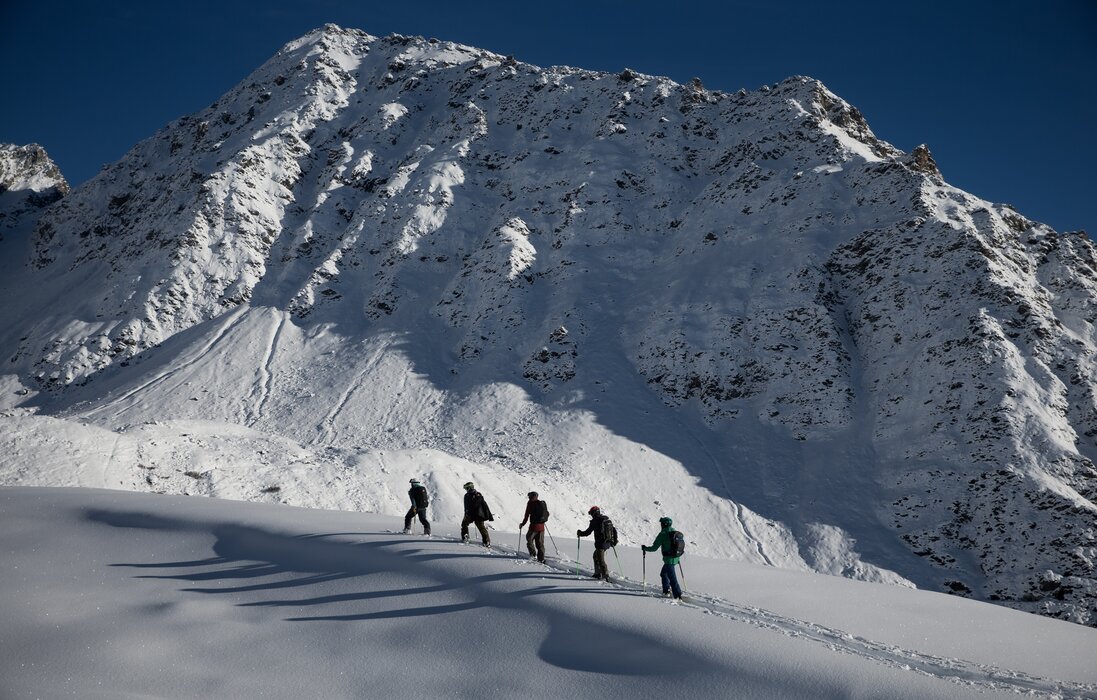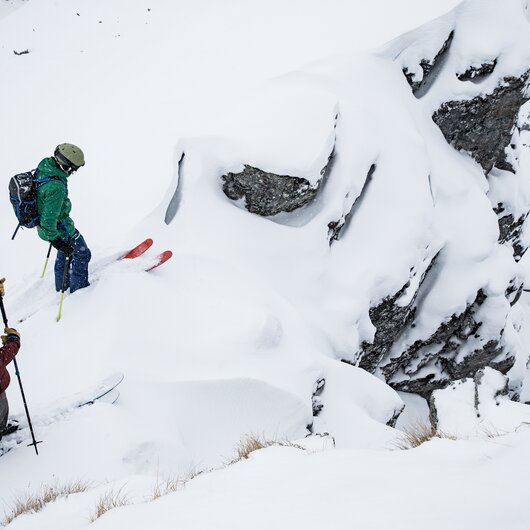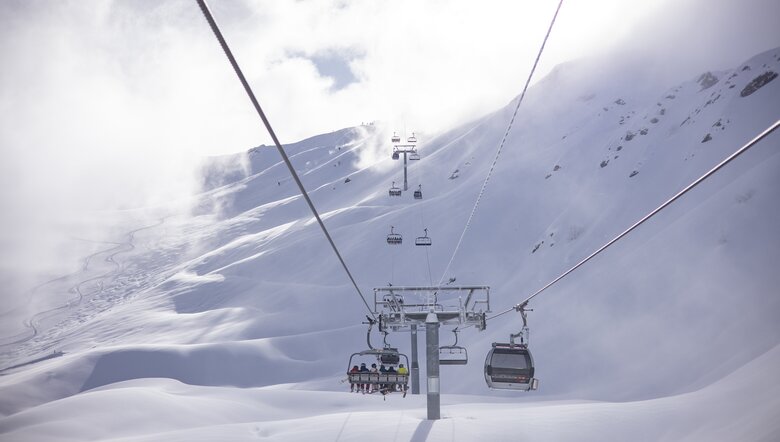Téléverbier and WEMountain have joined forces with the aim of improving safety in the mountains. The two companies have now teamed up to offer you special training courses focusing on the prevention of avalanches and improving safety in the mountains.
Did you know that in 90% of cases, the avalanche is triggered by the victim or a member of their group?
Off-piste skiing is becoming ever more popular in Verbier; the number of people with the burning desire for an exhilarating natural experience pushing you to test your limits is increasing season after season. However, around 200 individuals lose their lives every year in avalanches , which are triggered in 90% of cases by the victim or a member of their group.
How can you minimise the risks?
Knowing your environment and yourself is essential for minimising the risks. Our mental state, energy level and physical fitness play a key role in our decision-making and can have a positive or negative effect on our experience in the mountains.
Consequently, accident prevention is of the utmost importance: your fate is decided BEFORE the avalanche and not AFTER. What code of conduct should be followed for safe riding?
WEMountain code of conduct
Because with our love of the mountains comes a responsibility for nature, safety and mutual respect. Together, we can make the mountains safer!
RESPECT FOR NATURE AND OTHERS
Every step we take and every turn we make must demonstrate our respect for the flora, fauna and our companions in the mountains. We protect our ecosystem by acting with care and kindness.
RIGOROUS PROJECT PLANNING
Every adventure demands meticulous planning. Who, what, when, where and why? Plan all these aspects thoroughly to avoid the unexpected. Adaptation to the environment and vigilance in the face of changes are our allies for a safe off-piste experience.
MENTAL WELL-BEING
Knowledge and technique are important but so is our mental well-being. Our emotions, motivations and perceptions influence our choices. We cultivate a mindset favouring objective decisions and a realistic assessment of the risks.
PHYSICAL WELL-BEING
Physical fitness and clarity of mind are essential. A well-balanced diet, good hydration and restful sleep are our allies. It is important to remember that aches and pains, medication and episodes of stress can also affect our bodies.
SERVICING AND CHECKING GEAR
Rescue gear (avalanche beacons, probes, shovels, airbags) does not reduce the risk of an avalanche at all. In some cases, it can mitigate the consequences. We practise using it in order to be able to react effectively if needs be and do not forget to service it regularly. The same applies for sports gear.
KNOWING THE ENVIRONMENT
Nature is both our ally and our greatest challenge. The weather, terrain and snow conditions play a key role. We pay close attention to meteorological and topographical indications as well as signs of changes in the snow. We learn to assess slope inclination, orientation and areas affected by the wind. We remember that the majority of avalanches are triggered on slopes with inclines of more than 30°.
KNOWLEDGE OF SPECIFIC TERRAIN
We stick to favourable specific terrains to stay safe; doing so can reduce the risk of triggering an avalanche or mitigate its consequences. We avoid unfavourable terrains – triggering, aggravating or both – the consequences are often far worse than expected.
ADDITIONAL SOURCES OF INFORMATION
Information is our ally. The more options we have, the better we can make decisions. We consult local professionals, weather and avalanche bulletins where available and technologies to strengthen our analysis.
GOLDEN RULES OF MOVEMENT AND COMMUNICATION
Vigilance is our ally. Fatigue can impair our capacities. We remain attentive and comply with the movement and communication rules for a safe collective experience.
COMMAND OF EMERGENCY PROCEDURES
In the event of an accident, it is important to keep a cool head and to stay active and fight. Knowing the rescue and first-aid procedures inside-out is essential if you are to respond effectively and with a clear head. This includes understanding crisis communication and our legal responsibilities.
Remember: The best way to integrate these principles fully for safe riding is to complete training.
WEMountain: For more freedom, more fun and more safety!
WEMountain has developed the first international mountain safety programme combining e-learning and t-learning (practical course on the terrain).
Are you an off-piste rider wanting to acquire the necessary knowledge to ride safely? Join the WEMountain community and learn the basics of mountain safety and avalanche protection. Sign up now and help make our mountains safer.
Test your mountain knowledge!
Are you ready to put your mountain safety expertise through its paces?
For greater safety in the mountains, Téléverbier and WEMountain have created an interactive quiz specifically designed to test and broaden your knowledge. Find out if you are fully prepared for your off-piste adventures.





